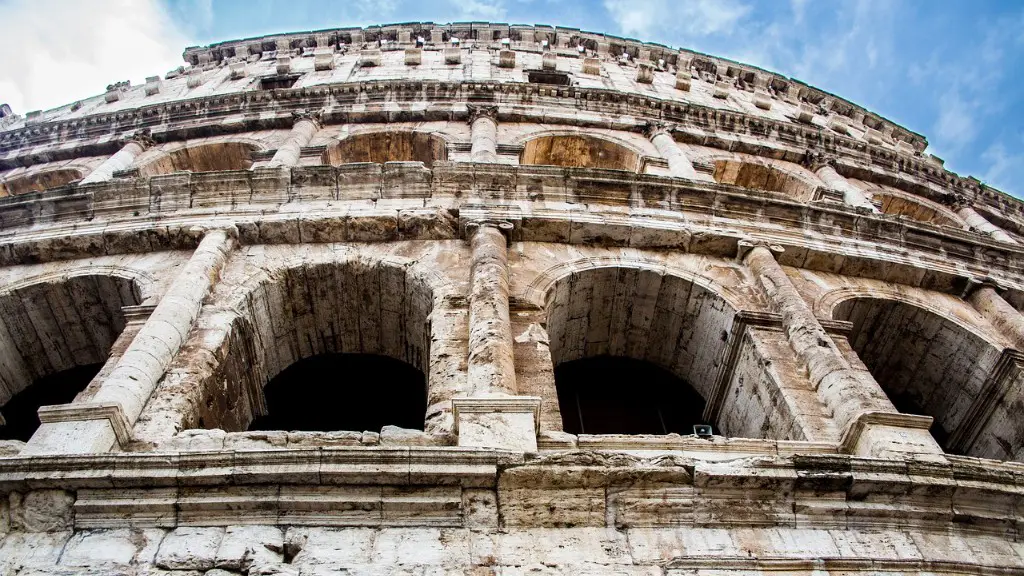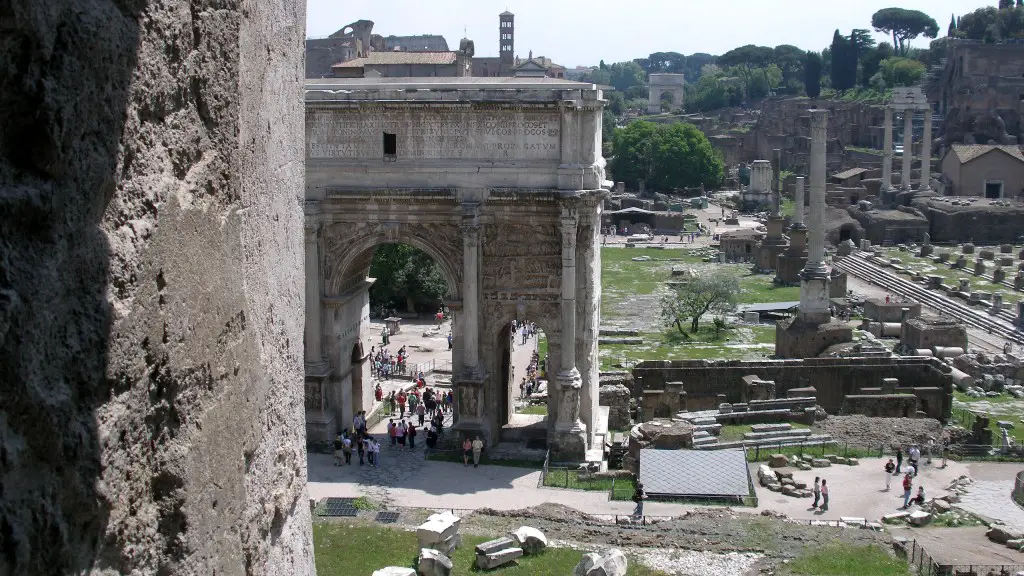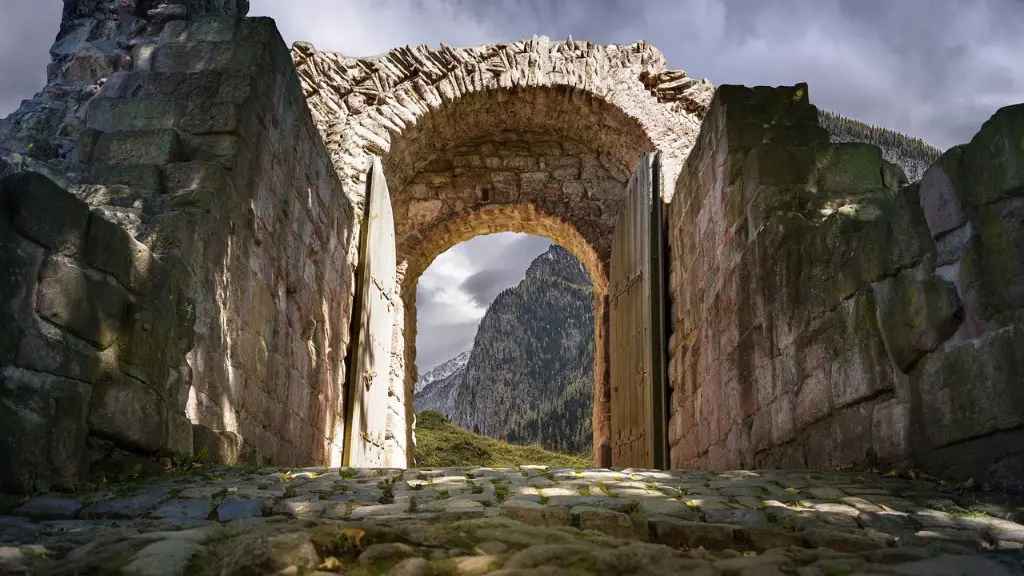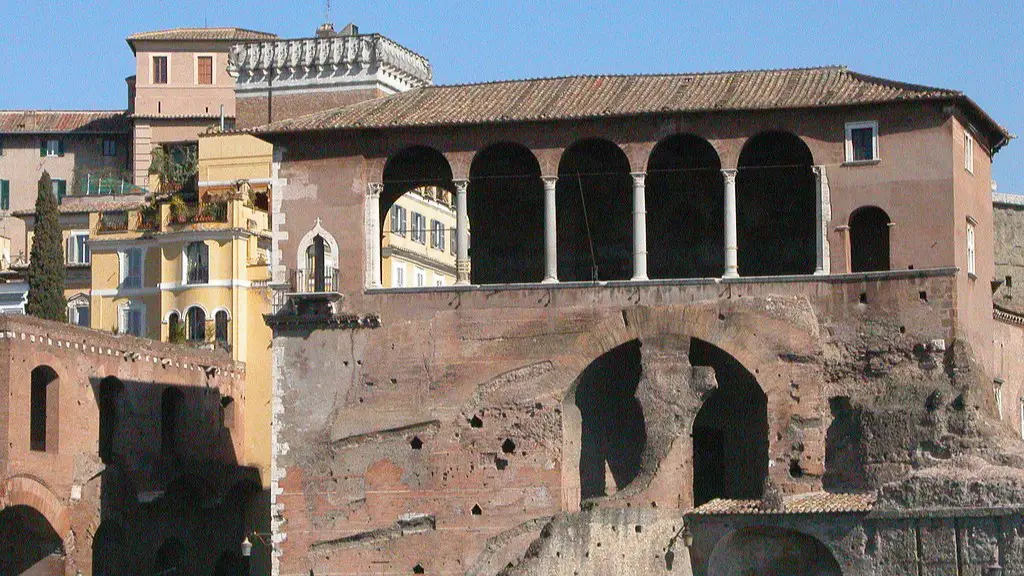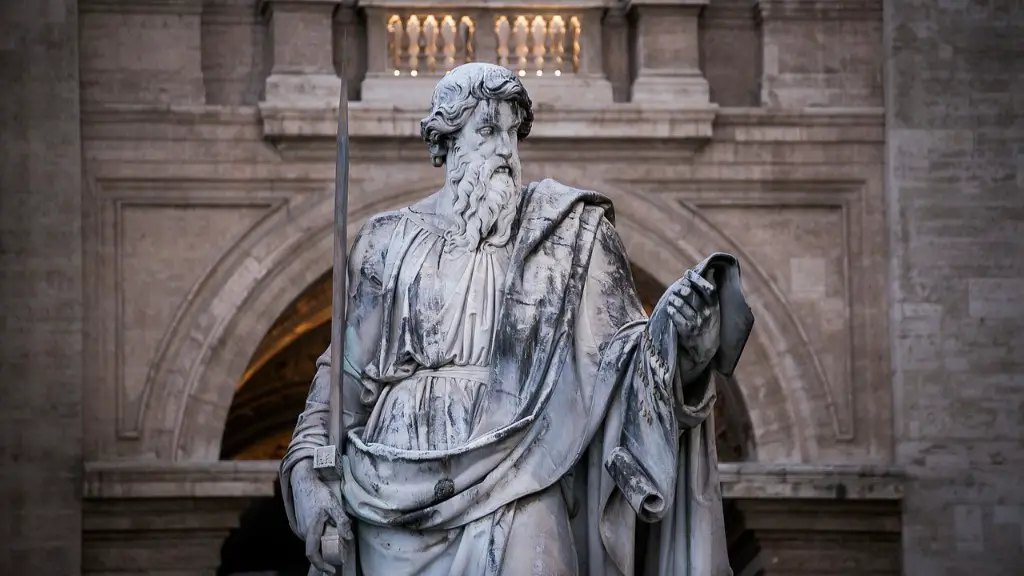Around 300 B.C., the Roman Republic began to build a system of roads that would eventually span more than 50,000 miles. These roads were built for military, political, and economic reasons. The roads were used to move troops and supplies around the vast Roman Empire. They also served as a way to unify the empire, making it easier for people to travel and trade between different regions. The roads were built byconvicts, slaves, and soldiers. They were carefully engineered, with a foundation of large stones and a top layer of smaller stones. The roads were wide enough to accommodate two carts side by side, and they were often lined with stone walls or trees.
Roads in ancient Rome were built by the Roman state. The Roman state had a monopoly on the construction and repair of roads. Road construction was paid for by the state through taxes. Road repair was paid for by the state through tolls.
How did Romans made roads?
The road was constructed by filling the ditch with layers of rock, gravel, and stone. Sometimes a layer of sand was put down if it could be found. This was done to make the road more sturdy and durable.
The ancient Roman roads were built for military purposes and were designed to be as straight as possible so that troops could move quickly from one point to another. However, because the terrain was often hilly, the roads would sometimes have to change direction in order to stay on the high ground. This was done in order to avoid having to cross rivers, which could be difficult and time-consuming.
Why were Roman roads so straight
The Romans built roads as straight as possible in order to travel as quickly as possible. This was because winding roads took longer to get to destinations, and because bandits and robbers could be hiding around bends.
The Roman roads were some of the best engineered roads in the ancient world. They were notable for their straightness, solid foundations, cambered surfaces that facilitated drainage, and use of concrete made from pozzolana (volcanic ash) and lime. Roman roads were an important part of the Roman Empire’s infrastructure and allowed for the movement of people and goods throughout the empire.
How do Roman roads last so long?
The roads that the ancient Romans built were some of the most durable and long-lasting of their time. This was due to the fact that they were made from aggregates, or different sized stones that were compacted together to create a strong and stable surface. This allowed the roads to withstand the marching of hundreds of soldiers and the weight of carts laden with supplies.
Most Roman roads were built using different layers of materials, including earth, gravel, and crushed bricks. The most prestigious roads had a top surface of dressed stone blocks, which were more durable and provided a smoother surface for travel.
Do any Roman roads still exist?
Roman roads were built for military, trade, and transportation purposes. They were built using a variety of materials including stone, dirt, and asphalt. Roman roads are still visible across Europe, with some built over by national highway systems and others retaining their original cobbles. Many of the roads still in existence are considered to be among the most important of the Roman road system.
The Romans were known for their excellent engineering and road-building skills. They built in straight lines not only because it was easier than doing bends, but because this made roads more efficient to use. This allowed for quicker and easier travel, which was essential for trade and transportation. The straight lines also helped to prevent wear and tear on the roads, which made them last longer.
What are 3 facts about Roman roads
Roman roads were essential for the movement of people and goods throughout the Roman Empire. They were quick and safe to travel, and the surface was cambered so that rain water would run off into the ditches. The Roman soldiers were not the only ones to use them – merchants also used them to carry goods all over the empire.
Ruts and potholes are not only the bane of modern drivers, but they were also a problem for the Romans. In 2015, a Roman road in Ipplepen, Britain was discovered that revealed the Romans had the same problem. According to archaeologists, the ruts were caused by horse-drawn carts that often ran along this road.
Who taught the Romans to build roads?
The Roman military were the only ones who could build the roads of the Roman Empire. They employed specialists within the units to actually do the work.
Roman roads were built for quick, safe travel and were used by both Roman soldiers and merchants. The surface of a Roman road was cambered so that rain water would run off into the ditches. This kept the roads in good condition and prevented flooding. Roman roads allowed the empire to expand trade and commerce.
How many layers did a Roman road have
Roman roads were built with four layers. The first was the statumen, a layer of large stones. On top of that was the rudus, a layer of gravel in concrete. On top of the rudus was the nucleus, a layer of sand and smaller gravel in concrete.
Roman roads were built in order to make traveling easier and faster. The main features of these roads were that they were built straight, regardless of gradient, and that they were built after the soft soil was removed and a hard stratum was reached. This ensured that the roads were durable and would not be easily damaged.
Are Roman roads really that good?
Roman roads were some of the best in the world at their time, however through modern technology and engineering we have now learned how to greatly improve on their design. Interlayers allow us to build stronger roads that can carry much heavier traffic than the Romans ever could have imagined. These roads can last for decades, making them a great investment for the future.
The Appian Way is one of the oldest Roman roads and was built in 300 BC. It is named after its founder, Appius Claudius Caecus. The Appian Way entered Rome through a monumental gate, the Porta Capena.
Do Roman roads get potholes
Potholes are certainly an issue for Roman roads, even if today, the roads appear infallible in construction. Over 400 spots of roads within Pompeii had evidence of road repairs, according to the American Journal of Archaeology. This means that potholes were a common problem for Roman road crews to deal with.
Roman roads were built to last. The bottom layer was a foundation of stone, the middle layer was a layer of softer material like sand or gravel, and the surface was a layer of gravel or paving stones. This made them durable and able to withstand the wear and tear of Use.
Final Words
Roman roads were built by the Roman state as part of the infrastructure of the Roman Empire. Standardizing the width, gradient and foundations of their roads, the Romans built roads that were more durable, and easier to use and repair, than any that had been built previously. The camber was deepest in the centre, and contracts towards the edges. This not only ensured strength and stability, but also helped drainage.
The roads in ancient Rome were built using a complex system of raised stone pavements and drainage ditches. This allowed for the roads to be both durable and effective in wet weather conditions. The roads were built by the Roman army using a technique called “floating piers.” This technique involved stacking large stones on top of each other without using any mortar or concrete. The roads were built to last and were used by the Roman army to transport supplies and troops across the empire.
